Is it possible to install sockets in the bathroom?
In typical houses renovated by the developer, sockets in the bathroom are usually not provided – does this mean that they are completely prohibited here?
Previously, it was really believed that sockets in the bathroom are unsafe, so in old housing stock, power sources are located outside, near the entrance to the bathroom. Today, both the electrical appliances themselves and the approach to construction have changed: modern bathrooms are more spacious, which means it is safer to use electricity in them.
You can install sockets in “wet” rooms! But since water is a bad ally for electric current, this should be done according to all the rules: buy special cables and sockets for the bathroom, choose a place for them according to all the rules.
We will talk about how to properly solve the issue with wiring in the bathroom in more detail in the following sections.
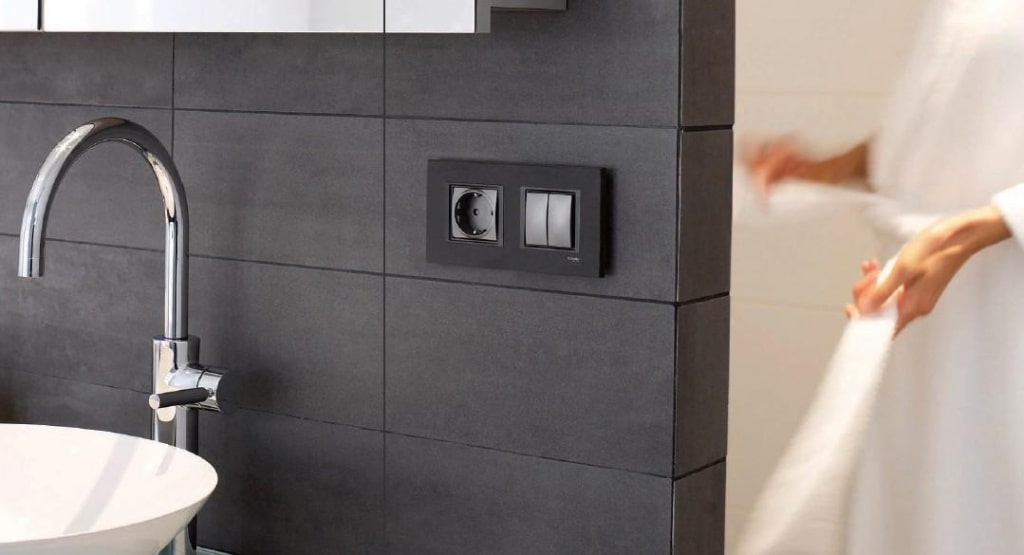

Why do we need sockets?
Installing sockets in the bathroom greatly simplifies the daily routine: a washing machine or dryer, water heater, electric razor, toothbrush, hair dryer and other electrical appliances are plugged into the bathroom socket.
At the same time, a socket for the bathroom, intended for a washing machine or water heater, mounted using power lines. If the house is old, it is better to lay a cable with a separate RCD (a switch for the socket itself).
A razor, curling iron and other devices with lower wiring requirements can be connected with standard two-wire wires – although it is better to use cables with grounding.
How many sockets do you need?
Since experts recommend hidden wiring for sockets in the bathroom, before starting work or calling an electrician, you should determine the exact number of required points.
To avoid making mistakes in calculations, take a pen and paper, write down all the devices that you are going to use in the bathroom.
Approximate list:
- washing machine;
- forced ventilation grill;
- water heater;
- electric heated towel rail;
- electric shaver;
- electric toothbrush;
- hair dryer;
- curling iron.
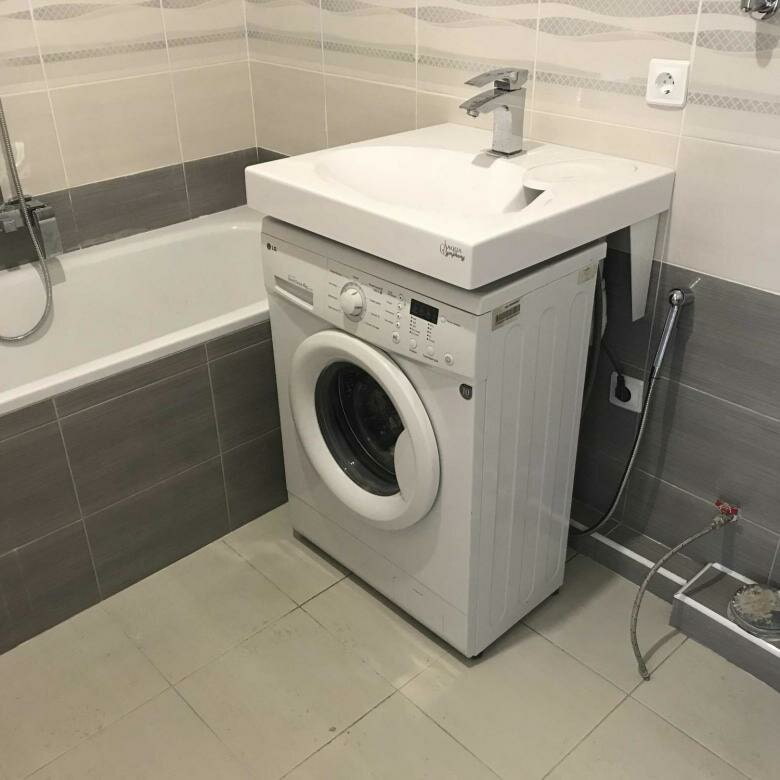

The next step in this list is to identify devices that are plugged into the network most of the time or constantly. They definitely need separate points.
It remains to think about additional outlets – for example, above the countertop. From here you can power a hair dryer or a charger for an electric toothbrush. Basically, two sockets on top, near the mirror and one for the washing machine are enough.
Where is it better to place them?
The location of sockets in the bathroom is a fundamental issue that must be studied before planning the room. The correct location for the hole is selected based on the distance from the high-risk zone and the distance from the floor.
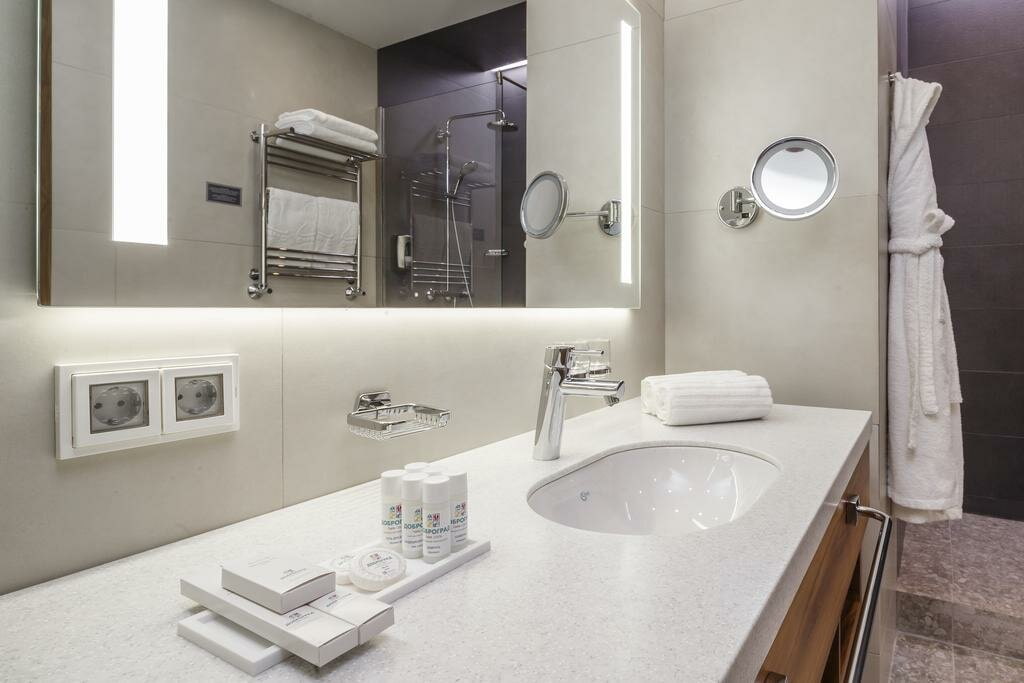

The photo shows models with curtains above the countertop
Which zones are suitable for installation?
According to GOST R 50571-7-701-2013, described in the PUE (electrical installation rules), any bathroom is divided into 4 zones:
- Zone 0. Or the red zone — this includes the inside of the bathtub, sink, shower cabin. GOST prohibits the placement of any types of sockets for safety reasons — the voltage in the zero location is life-threatening.
- Zone 1. Located under the sink or on top of the bathtub. According to the standards, it is also prohibited to install 220V outputs here, but it is allowed to connect a boiler with a class of at least IPX5 through a circuit breaker.
- Zone 2. 0.6 m around the sink, bathtub, shower. The installation of sockets is still prohibited, but it is allowed to install devices that are plugged into a socket located in the next zone. These can be boilers, mirrors, lamps.
- Zone 3. The remaining space of the bathroom. It is recommended to install the main sockets in the bathroom here. Mandatory requirement – minimum moisture protection level IP44, better IP54 and higher.
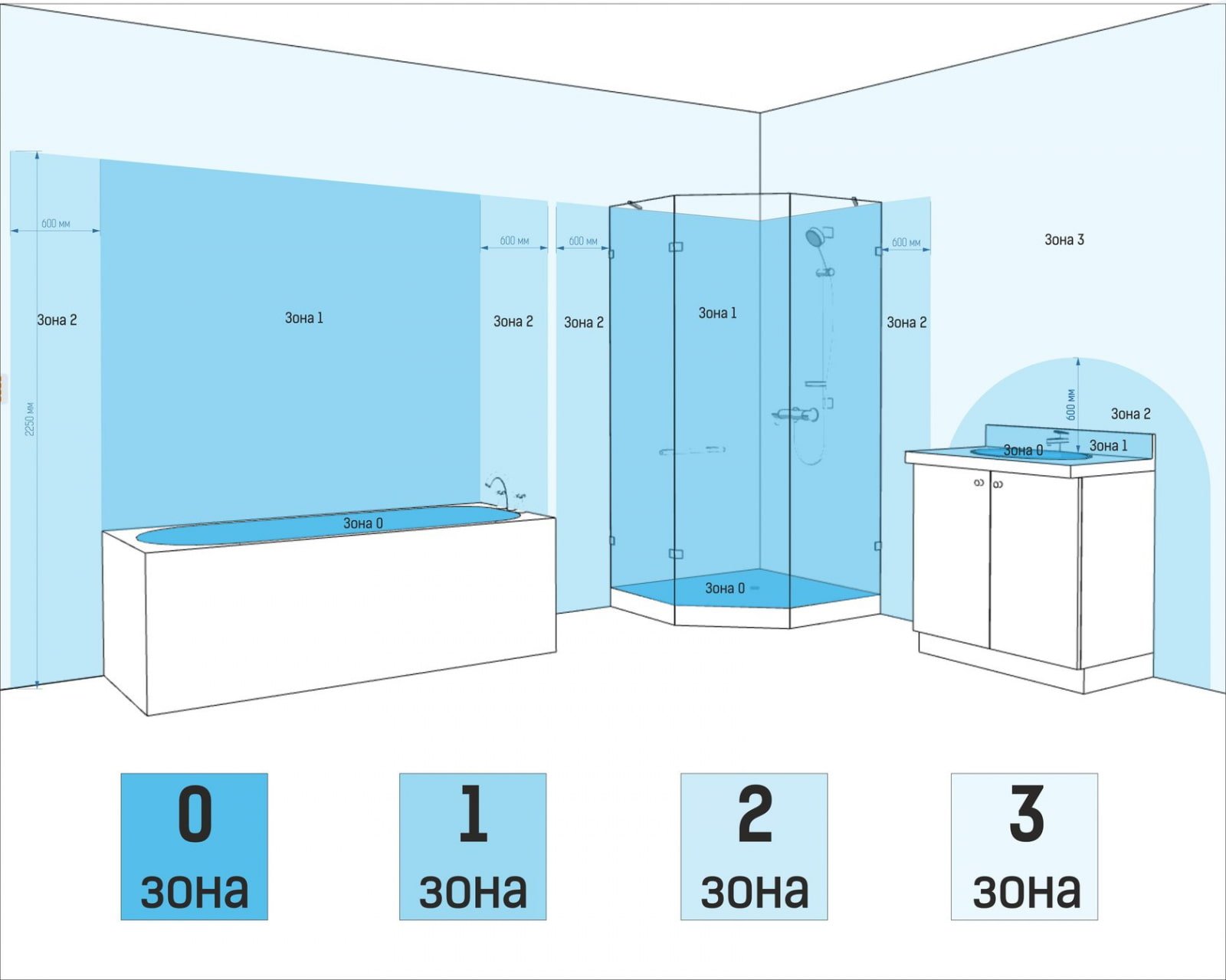

Important! The division into zones is relevant up to a partition height of 225 cm. Anything higher is beyond the requirements and has virtually no restrictions on the installation of electrical systems.
This exception allows you to place a water heater or a washing machine even in a small bathroom, connecting them at a height of 15-20 cm from the ceiling.
If the room is too small and there is no Zone 3 in it, it is better to refuse sockets and place them on the wall near the door outside the room.
What distance is suitable?
The height of sockets from the floor in the bathroom is determined individually and depends largely on the layout of the room. For example, if you need a socket above an 80 cm countertop, feel free to make it at 90 cm. At the same time, make sure that splashes from the sink do not get inside: this can be easily achieved by moving the point 60 cm from its edge to the left or right.
The statement “the higher, the safer” is not entirely true. The socket in the bathroom can be raised by 2 meters, but it will be extremely inconvenient to use. If you are afraid of a short circuit during flooding, it is enough to place the entrance on the wall 60 cm from the floor covering – water will definitely not reach here.
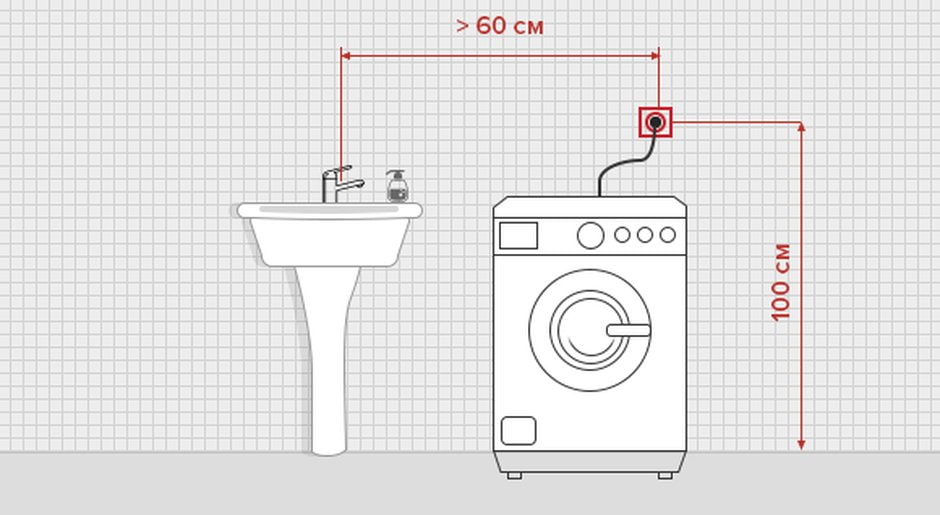

What sockets can be installed?
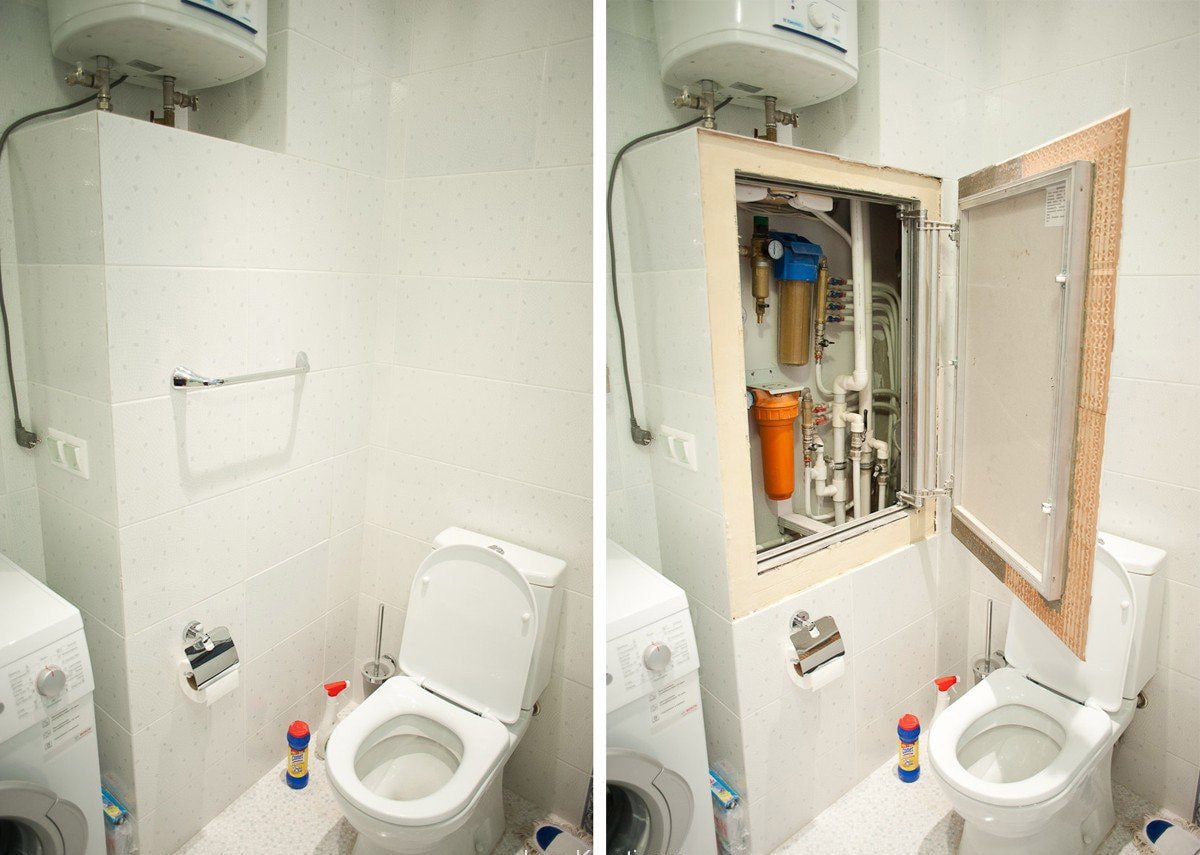
We have already mentioned the protective standards for the bathroom – IP not less than 44. What else distinguishes bathroom sockets?
- Curtain. The housing cover guarantees protection from splashes when nothing is plugged into the socket in the bathroom.
- Closed contacts. Special inserts made of rubber or plastic provide insulation from water.
- Seal. The silicone contour provides additional waterproofing when using household electrical appliances.
The only caveat is that models with a curtain are 100% protected only when nothing is connected to the network. That is, the socket in the bathroom is empty, its curtain is closed. If some household appliances must be plugged into the network constantly and there is a possibility of splashes, use waterproof modifications IP66. For example, Legrand Plexo is equipped with the “Lock 66” system, which allows you to maintain protection from moisture when the plug is inserted.
The level of protection is determined by the last digit in the designation: the mark 4 indicates complete protection from any splashes, and devices with the mark 7 can be immersed in water to a depth of 1 meter.


What rules should be followed during installation?
In conclusion, let us once again summarize what has been said and outline the basic rules that must be observe, if you refuse the services of the masters:
- Minimum class of moisture protection is IP44. 4 at the end means protection against water drops.
- Wiring must be hidden – external wiring is prohibited by the Electrical Installation Code. Also, cables cannot be hidden in metal channels. If you can only lay them in an open way, choose insulated cables and hide them in a corrugated pipe. The optimal cross-section of the wire cores is 2.5 mm.
- To make the socket in the bathroom suitable for both a hair dryer and a washing machine, a three-core cable with grounding is required.


The photo shows the wrong location of the electrical outlets
-
Read also7 options for planning a small bathroom
To protect yourself and your loved ones from electric shocks, connect serious technical devices (boiler, washing machine) through a RCD. For maximum safety, it is recommended to install isolating transformers in bathrooms – they eliminate electric shocks even when in contact with the conductor. But they are rarely used in ordinary apartments.
- The layout of the electrical outlets should be based on zoning, so that during repairs the sockets are not located near a water source. Think over the layout and placement of all elements in advance.
Laying an electrical main is a complex and responsible process on which the lives of you and your loved ones depend. If you doubt your knowledge and strength, entrust the work to proven specialists. Professionals will do the wiring according to the PUE standards and the sockets can be used without fear.
Now reading:
- 10 ways to decorate the wall above the toilet in an original way
- Creative Ways to Decorate a Profiled Sheet Fence on Your Plot
- Dark Doors in the Apartment: 60 Modern Interior Ideas and Photos
- Tulle with eyelets: 70+ interior photos and tips for window decoration
- Vertical Flower Beds: 5 DIY Ideas and Real Photos